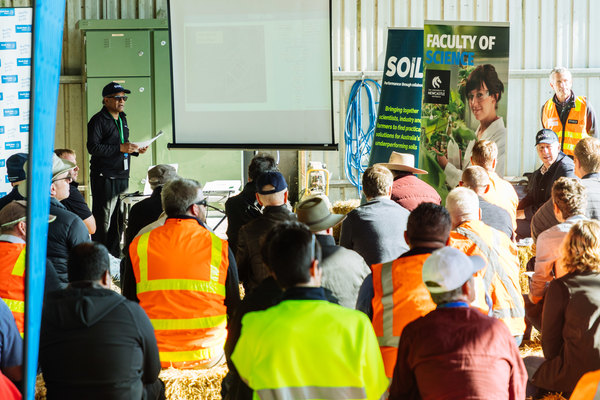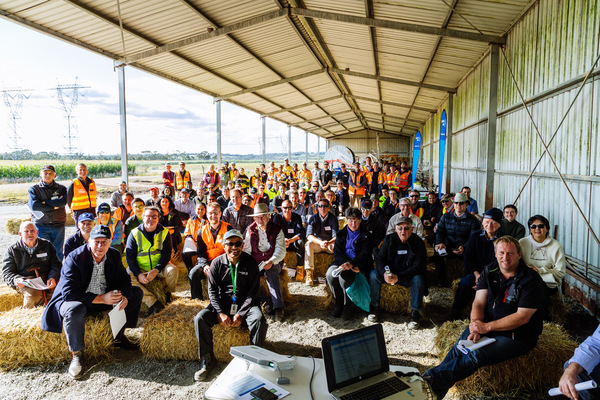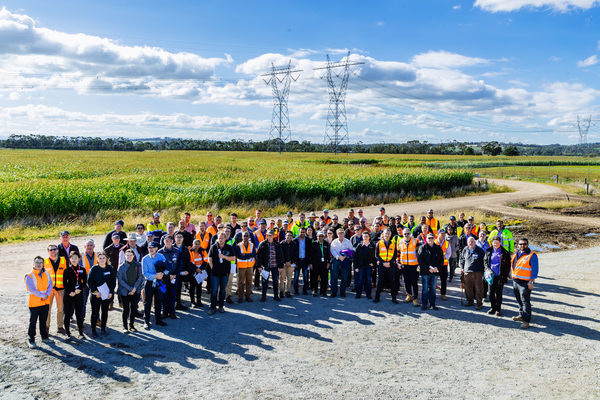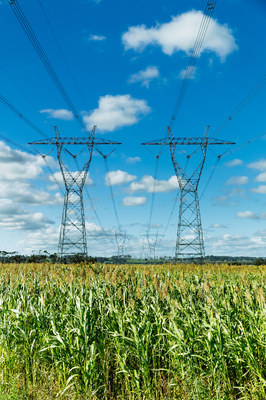
Most of us don’t give two thoughts to what happens after we flush, but this is where South East Water does some of its most important work. The water authority has been doing some solid work at Longwarry in recent times with … well … our solids – working on turning what was literally the worst kind of waste into what could be a very valuable farm commodity. ANDREW CANTWELL looks at whether it passes the sniff test.
“We all take food, we all generate biosolids – it’s our obligation to use those biosolids wisely.”
For farmers, what comes out of the back end of a cow, a sheep, a horse or any other farm animal, is part of nature’s rich tapestry – a welcome contribution to soil fertility … as long as you don’t step it inside.
The big picture is that poop is part of an animal-based plant nutrient recycling system that stretches back in farming’s history for millennia, and that is so beneficial to good pasture, crop and soil health that it can’t sensibly be ignored.
It’s just part of the conditions of farming.
And they’ve come to laugh at this particular condition, while making wry observations about the condition of others – not for nothing goes the old farm saying: “I’d rather be a man among sh*t than a sh*t among men”.
Yet the role of these farm animals is about to be challenged if trials currently being undertaken by South East Water pay off.
It seems that the human ‘call of nature’ may be more than a match for nature itself – and the city’s sewers may actually run with rivers of gold.
The euphemistic term to look out for is ’biosolids’ – that’s what’s left over in the settling ponds once the ‘fluids’ have been dealt with.
Bluntly, what you’re flushing may be the next big source of farm fertiliser – the remains of your last meal may become the beginnings of your next.
And why not – what’s sent down the pipes is a nutrient-rich ‘soup’ that has been used on farms elsewhere in Australia for the better part of two decades (mostly New South Wales), and in other parts of the world for centuries.
Up until recently, it was simply buried or sent to landfill.
Well, it’s not really that simple.
Now may be the right time to add that biosolids are separate and distinct from sewage.
There are rigorous treatment processes the sludge must go through that are directed at reducing the level of nasties in human waste before it can be reused.
Those nasties include pathogens and parasites, heavy metals, chemical residues from pharmaceuticals – both prescribed and recreational – and contaminants that are tossed down the toilet without a second thought.
The end product of treatment must then – under strict EPA controls – be stored for three years before it can be used for biosolid fertiliser, at what is known as the T1 standard.
This is costly and labour intensive, as the solids must be dried and then collected from various treatment plants and be transported to a holding facility and then stored and matured for that duration.
This is where the South East Water trial comes in – it aims to reduce the holding time from three years to one, plus utilise the biosolids near where they’re produced; reducing the handling, transport and storage costs immensely.
South East Water’s Pakenham treatment plant is one of four owned by the utility that produce biosolids for agricultural use. The others are at Boneo, Somers and Blind Bight.
But it’s what’s been happening at South East Water’s Longwarry treatment ponds that’s causing the stir.
The utility last year partnered with the University of Newcastle and the Soil Co-operative Research Centre to undertake trials to direct-inject liquid biosolids into pastures, on which crops may be sown – and potentially grazed.
Injecting the nutrients at the root level provides plants with immediate access to a better level of nutrient than the matured material offers, while also drastically minimising what’s called ‘vector attraction’ – the possibility of mosquitos, birds or other critters being attracted to the moisture and perhaps picking up and spreading some of the under-treated nasties that may remain.
By sticking it in the ground there’s also a dramatic reduction in odour.
The trial hopes to encourage the EPA to loosen its restrictions on the lesser treated T2 and T3 wastes -which currently cannot be used for agriculture – by demonstrating that containment in the soil mitigates the possible contamination risks.
The trial partners reported earlier this year to a group of about 100 industry professionals and researchers, who also witnessed firsthand a bumper crop of summer forage sorghum grown at Longwarry.
The project lead at South East Water is senior research and planning scientist Dr Aravind Surapaneni.
Speaking with the Soil CRC at the time of the field day, Dr Surapaneni said the project was all about the productive use of human biosolids for farming.
He indicated this addressed two key issues – handling and storage of the ‘waste’ material by the water authority – and its supply to farmers as a valuable agricultural resource.
“Biosolids presents a unique opportunity to increase agricultural independence in relation to our phosphorus intake,” Dr Surapaneni said.
“We all take food, we all generate biosolids – it’s our obligation to use those biosolids wisely.”
Dr Surapaneni said the current regulations for biosolid usage in Victoria was to apply it on farms, which already use the top grade – or T1 – biosolids.
The object of the two-year Longwarry trials was to supply lower grade liquid biosolids – at T3 standard – but still get as much value from the top-grade T1 product for the farming community.
“The project ticks a lot of boxes – one for the water industry. At the moment the water industry is thinking about innovative ways of using biosolids,” Dr Surapaneni said.
“This particular project is looking into liquid injection of biosolids into the subsoil to improve subsoil health, so that the plant can get access to the water and the nutrient in the biosolids as it is.
“For the farmers, farmers are always looking for ways to improve their soil fertility and function, and the biosolids are basically a free purchases for the farmers – we don’t charge farmers for the biosolids, we just give it away, and for a good use.”
According to the trial report to the field day, the first summer application of the trial was better than expected.
Not only was the sludge in a usable form for injection – with pathogens, heavy metals and ‘volatile solids’ within EPA guidelines – but the follow-up monitoring has shown other important control measures to be in line with naturally occurring background measures.
The Longwarry site has a number of monitoring bores, which will allow ground water infiltration to be monitored to alert the utility to any potential contamination threat to the nearby King Parrot Creek.
No threat has been detected to date, but as the trial continues, the accumulation in the soil will be closely monitored.
If the final results of the trial continue to show the promise, the formerly problematic waste could be turned into a valuable commodity for water authorities.
For now, South East Water is pleased with the attention the trial has garnered within industry circles – and the national award from the Australian Water Association, for research innovation.
The award was accepted by Dr Surapaneni in May.
The utility continues to look at ways to innovate and re-use – most recently beginning a trial on the Mornington Peninsula to take advantage of recycled water for farming use.
With altered weather patterns and the drying of dams on the Peninsula, farming operations have been hampered and workers laid off.
The supply of recycled water could reduce farmers’ reliance on the weather, and lead to more productive farming practices year-round.
South East Water has a number of holding ponds around Cardinia that could also potentially be used for farming in the future should the Peninsula trial prove effective, and the availability of usable water on the swamp become scarce.
For more information on the South East Water trials visit southeastwater.com.au










